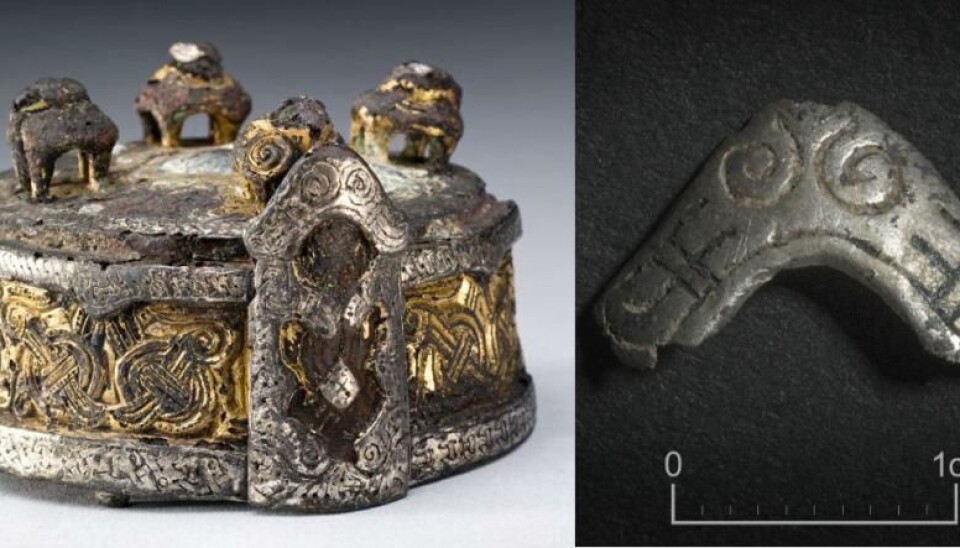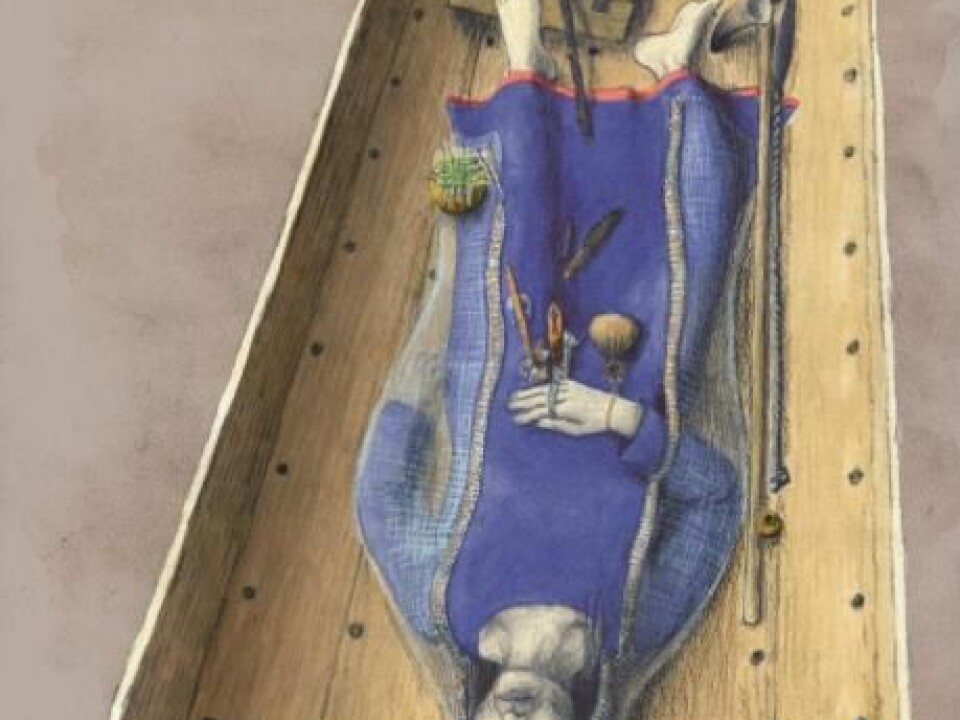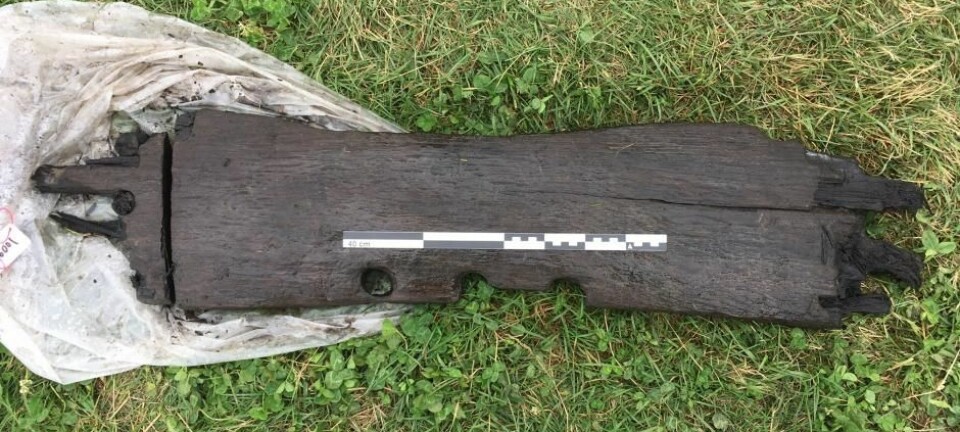
This tiny ornament may have belonged to Harold Bluetooth’s shaman
The small piece of silver was found at a Viking fortress in Køge, Denmark.
A small silver fitting has been found during excavations of the Viking fortress “Borgring” in Køge, east Denmark. It resembles one of the three missing parts of a distinctive Gotlandic box brooch previously discovered at the Fyrkat fortress in Hobro, north of Borgring.
The Fyrkat grave was one of Denmark’s richest female graves from the Viking Age, and belonged to a shaman or sorceress who the Vikings would have held in extremely high regard.
If the silver fitting found at Borgring really did originate from the same box brooch it would suggest that the woman had travelled between the castles, which were presumably built by Harold Bluetooth--king of Denmark between 958 and 987 CE.
“It will be incredible if this fitting is connected with the find from Fyrkat. If this really is where it comes from then it’s like finding a needle in the ocean,” says archaeologist Jeanette Varberg, a curator at Moesgaard Museum, Denmark. Varberg was not involved in the excavations at Borgring.

Read More: Archaeologists finally know how old Denmark’s fifth Viking fortress is
“One of the most incredible experiences I’ve ever had”
The ornate little box brooch was discovered in Borgring’s northern gate, which is believed to have been the main entrance to the fortress.
Initially, the researchers could not work out where it came from, says archaeologist Søren Sindbæk, a professor in Middle Age archaeology at Aarhus University, Denmark. Sindbæk helped discover the fortress in 2014.
“In most cases we say ‘Oh it resembles this or that.’ But we could not figure out what this little piece was and neither could our colleagues. We all mulled it over until it suddenly dawned on me where I’d seen it before,” says Sindbæk.
“It turned out to be a very unusual piece of jewellery, only one of which had previously been found in Denmark: In the shaman’s grave at Fyrkat. It’s one of the most incredible experiences I’ve ever had as an archaeologist,” he says.
Read More: Wheel tracks discovered at Viking fortress in Denmark
Jewellery was probably an heirloom
Female shamans could see into the future and cast spells. Written sources describe their high-standing in society at the time, and they were often treated as royalty.
The Gotlandic box brooch is shaped like a powder box, suggesting that it could have been used as part of her rituals.
Earlier analyses suggested that it contained white lead—a type of white colouring that could have been used as make-up for seances.
New analyses suggest that the white lead was actually used as a sealant, enabling the powder box to hold liquid. It could have been used to drink hallucinogenic liquids, says Sindbæk.
The box brooch was already old when it was buried with Fyrkat woman, along with a number of exotic objects, including a bronze bowl, possibly from Iran. She was dressed in red and blue cloth decorated with gold thread and buried in a casket made from a carriage, in a style reserved for the wealthiest of women.
But it is still one of the most interesting finds in the grave, says Varberg.
“It might have been an heirloom, which the woman inherited from her grandmother. She didn’t use it as jewellery, but rather as a little cup to store things in or to drink something special from. It was a part of her private things, a well-used and highly treasured piece,” she says.
Read More: New discovery could rewrite Viking fortresses’ history
Decoration fits the shaman’s box brooch
The box brooch is thought to have originated from Gotland in Sweden, where many similar items have been discovered.
Theoretically, the little silver fitting discovered at Borgring could also originate from one of these box brooches, where the upper part is often broken off.
But when archaeologists reviewed the literature they could see that the ornamentation on the piece from Borgring could only be found on the Fyrkat buckle.
“We have not found the spiral ornamentation on box brooches from anywhere other than Fyrkat. So its odd when we only have one item that looks to have exactly the same ornamentation,” says Sindbæk.
Read more: Archaeologists discover a Viking toolbox
Jewellery is an essential trace of the past
The box brooch was discovered in the so-called “road layer” in Borgring’s northern gate, which was deposited at around the same time as the shaman grave at Fyrkat, around 980 CE.
“Suggesting that the Fyrkat shaman travelled with the King’s warriors, is basically saying that she stayed at other fortresses belonging to Harold Bluetooth. But to find a trace of something that perhaps belongs to the same box brooch, which is found with this very unusual women, that’s incredible,” says curator Nanna Holm from the Museum Sydøstdanmark, who led the excavation of Borgring and discovered the little silver fitting.
She stresses that we need to wait for the metal analyses before we can say with certainty whether the piece originates from the same material as the box brooch. Even then, it will be open to interpretation as to whether the two are one in the same or whether a number of identical box brooches were made in the same style.
“Of course, it would be great if they come from the same box brooch, but I’m just excited that we now have a direct link to Fyrkat,” says Holm.
----------------------------
Read more in the Danish version of this story on Videnskab.dk
Translated by: Catherine Jex










